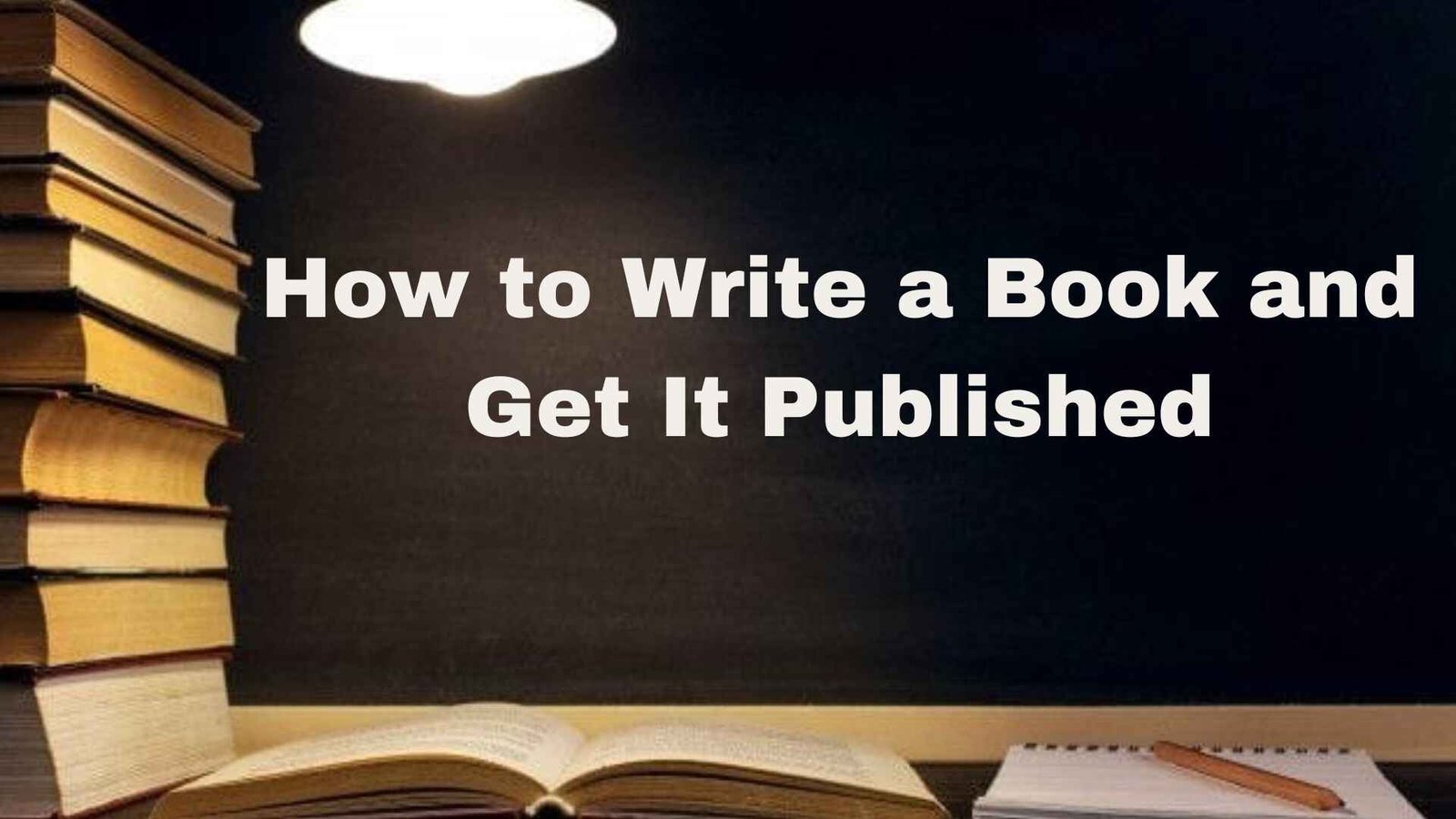Book writing is a wonderful process which occurs in ideas, work and strategy. It seems like everybody has a dream of writing something like the best-selling novel, the most informative self-help or an inspiring memoir, however, very few people are aware that coming up and putting together a book can be very entertaining and at the same time slightly schwer. Going through this article you will find all the guides that can assist in making the process of How to Write a Book and Get It Published smooth, including tips on book marketing and self-publishing.
Find Your Big Idea
Like any book, this is not an exception, this book was written based on an idea. It might be a story you have always wanted to share, the lessons learnt from the life experiences or information you wish to pass to others. To begin with, remember that it important break your goal down and define its purpose. What do you want people to know, and who are the target consumers? When you come up with a good core concept, invest a lot of time on developing the concept.
Choose Your Genre
Your book’s genre will influence its style, tone, and structure. Fiction offers endless possibilities for storytelling, while non-fiction requires research and organization to deliver valuable insights. Choosing your genre early will help you focus your writing and meet readers’ expectations.
Outline Your Book
An outline needs to be seen as the map that you will use when writing a book. It also orders your idea flow, so if you are not used to writing in a free form, it can actually save you from racking your brain and getting writer’s block. For fiction, it could entail having an outline of the main story line, the story lines of the sub-stories as well as the character evolution. As to non-fiction, an outline also represents a way of structuring the chapters and checking whether your reasoning is smooth. Understanding How to Write a Book and Get It Published can help you organize your thoughts more effectively.
Set a Writing Routine
Writing a book requires commitment and consistency. Set aside dedicated time each day or week for writing. Whether you write in the early morning or late at night, find a schedule that works for you and stick to it. Consistency is more important than speed, so even small, regular progress will bring you closer to completing your book.
Draft Your Manuscript
Your first draft is about getting words on the page. Don’t worry about making it perfect—just focus on turning your ideas into text. Some sections will flow easily, while others might require more effort. Push through the tough spots, knowing you can refine everything during editing.
Polish Your Writing
Once you have your rough writing done, it’s now time to exercise the editing process. The process of revision means making improvements as to the specificity of message, correction of grammatical and punctuation mistakes, and overall mise en placement. The rules are editing may sometimes be tiresome; therefore, it may help to ask friends or other writers, or hire professional editors. That is why the fresh point of view of an experienced professional is always useful in the extreme, because they can reveal a problem that, perhaps, you did not even notice. Understanding How to Write a Book and Get It Published can make this process more efficient and effective.
Understand the Publishing Process
As you consider publication, be informed. There is also making your books through the conventional approaches and there is self publishing depending on the writer’s wish and ability.
Conventional book publishing entails sending your manuscript to the literary agents or the publishers. When, accepted, they will be responsible for editing the paper, printing, and designing. This option gives clients prestige, professional backup services, yet it is very competitive.
Self-publishing enables you to be in charge of the whole project. That is right; you will be in charge of producing the content of the book, as well as the layout, and even the promotion of the book. Online companies such as Amazon KDP and IngramSpark help authors to self-publish. This path is more demanding; however, it has more creativity and chances to get a much better percentage of royalties than in other paths.
Choose the Right Publishing Platform
If you decide to self-publish, research different platforms to find the best fit for your book. Amazon KDP is popular for eBooks and print-on-demand services, while IngramSpark offers wider distribution to bookstores and libraries. Evaluate the costs, royalty rates, and features of each platform before making a decision.
Design Your Book
In this regard, designing a book is essential for the purpose of appealing to the target readers. Your cover should be attractive and well created as it forms the first impression to the potential consumers. Interior formatting is also important – it can be seen that neat formatting of text is pleasant to the eye. You can use design tools if you don’t want to go to the extent of hiring professional services to have your book looking professional.
Set a Price
Pricing your book requires careful consideration. Research similar books in your genre to determine a competitive price. Keep in mind the value you’re offering to readers and your publishing costs. You might want to start with promotional pricing to attract initial buyers and gather reviews.
Market Your Book
Marketing your book is just as important as getting your book published and lead us to the next process. First of all, select the page or site where your work will be viewed by an audience – this may be a social network, a blog, or an author’s web page. Market your books and establish a groundwork for future clients on the social platforms before even publishing your books. Once you have your book out, you probably will need to sponsor an advert, issue a press release or hire some influencers to share the word. Learning How to Write a Book and Get It Published can help you effectively approach this crucial step.
Gather Reviews
Praise can make a tremendous difference as far as the spread of your book is concerned. Ask friends, relatives and those who decided to become your first readers to write the reviews on the resources, such as Amazon or Goodreads. User and editor reviews help increase the paper’s credibility and facilitate its acquisition of new readers.
Track Your Sales
Once you have your book out there, you can track its performance with the help of the stats offered by your publishing platform. Understanding your sales data will assist you to make better marketing decisions as well as know where to improve on.
Stay Persistent
Writing a book is never easy and it is even harder when one has to do it independently and but the whole process is winnable if one is a butcher. To augment success, be sure to cheer for wins however piggyback on that to grow from your failures. Be informed that every successful author is a beginner at some point.
Conclusion
Publication of books is honorable work that helps one to share information, ideas, knowledge, and stories with people. Both self-publishing and conventional publishing are not easy processes depending on your option, one requires creativity, discipline, and determination. This is a guide to becoming an author. If you have ever wished to become an author, then reading this guide will take you through the entire process of How to Write a Book and Get It Published.
FAQs
What is the average cost to self-publish?
The total outlay varies from $1,000 to $3,000 for self-publishing the given book that may include editing, cover designing, and marketing.
How much does it cost to self-publish in Australia?
Pricing for self-publishing in Australia falls in the range of AUD 1,500 up to AUD 5,000 depending on services by an expert and chosen platform.
Do self-publishers make money?
However, self-publishing is possible and self-publishers can actually earn money, if they have good marketing skills and/or a well-produced book. Some make little money while others make good sales depending with the sales volumes and the prices set.
What are the pitfalls of self-publishing?
A few more of such inherent shortcomings include inadequate editorial input, unprofessional layout, restricted circulation, and little promotion. But by careful planning and investing to roll out new electronic equipment, we can be saved from these problems.
How much do authors get paid for their first book?
Traditional publishing houses provide advances from one thousand to ten thousand dollars, at the same time, while incomes of self-publishers depend on their sales. There are those self-employed individuals that can make significantly higher earnings.








